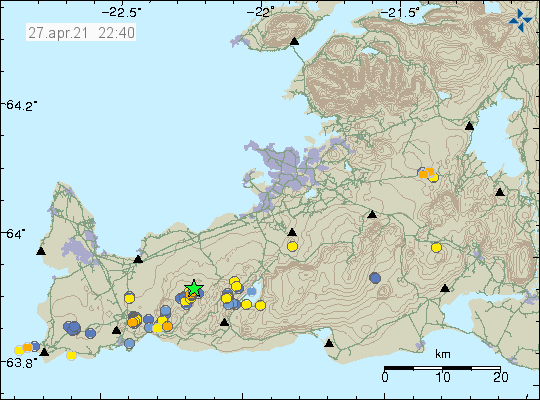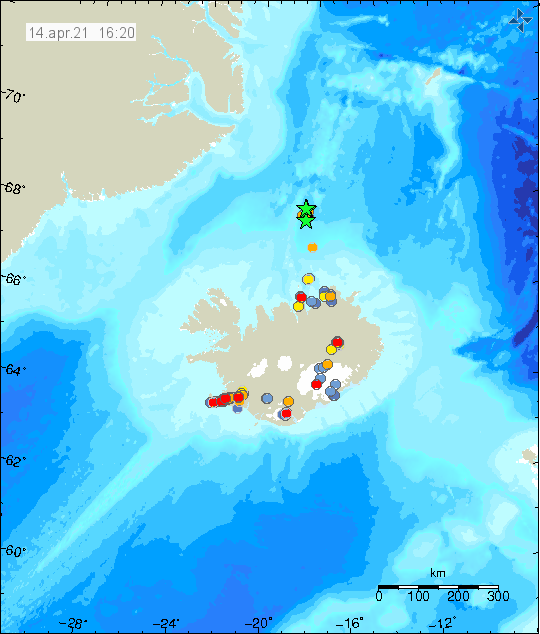During the night of 27-April-2021 an earthquake swarm took place south of Keilir mountain in Krýsuvík-Trölladyngja volcano system. This earthquake activity at this location has been going on for a long time and is interesting. There are no sign that suggest an eruption is about to happen at this location, that is the situation at the writing of this article. Largest earthquake in this swarm had a magnitude of Mw3,2 at the depth of 6,1 km and second largest earthquake had a magnitude of Mw2,8 at the depth of 5,9 km.

It seems that there is a chance there might be changes about to happen in the eruption in Fagradalsfjall mountain. I am going to write about that tomorrow at the earliest, but the article might be delayed of there is a lot going on while I gather information about what is happening.




